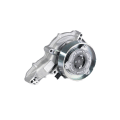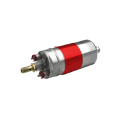Oxygen Sensors
Your car's engine operates within a complex network where oxygen sensors quietly hold a key position. These often-overlooked components are vital for optimal performance. Recognizing their significance not only helps you save money on repairs but also promotes eco-friendly driving habits. This article delves deep into the realm of car oxygen sensors, providing a thorough understanding of their role, essential maintenance tips, and methods for diagnosing and resolving common issues.
Understanding Oxygen Sensors
Oxygen sensors, commonly referred to as O2 sensors, are integral components of sophisticated feedback systems within vehicles. These sensors continuously monitor exhaust gases to determine the optimal fuel-to-air ratio, providing crucial data to the engine's management system. This information enables the system to enhance fuel economy and minimize detrimental emissions.
Modern vehicles typically incorporate multiple oxygen sensors, including at least one positioned before and after the catalytic converter. The pre-catalytic converter sensor, often referred to as the upstream sensor, is responsible for measuring oxygen levels in the exhaust stream before it enters the catalytic converter. This data is then transmitted to the engine's computer, allowing for real-time adjustments to fuel delivery and combustion parameters. Conversely, the post-catalytic converter sensor, known as the downstream sensor, serves a critical role in monitoring the gases that have passed through the catalytic converter. This sensor ensures that the catalytic converter is operating effectively in its primary function: reducing harmful emissions. By continuously assessing the quality of the converted gases, the downstream sensor provides feedback to the engine's management system, allowing for fine-tuning of emission control strategies.
Overall, oxygen sensors are indispensable components of modern vehicle emissions control systems. Their ability to provide real-time feedback on exhaust gas composition enables the engine's management system to optimize performance, enhance fuel economy, and minimize environmental impact.
Diagnosing Issues with Your Oxygen Sensors
While the specific indicators of a faulty oxygen sensor depend on the make and model of your vehicle, some common signs are worth noting:
Illuminated Check Engine Light:Check engine light is often the primary indicator of a failing O2 sensor.
Reduced Fuel Efficiency: As the oxygen sensor plays a key role in managing the fuel mixture for optimal combustion, its failure can lead to gas mileage reduction.
Emissions test failure: A malfunctioning O2 sensor can result in elevated levels of pollutants in the exhaust, causing the vehicle to fail emission inspection tests.
Rough Idling and Poor Engine Performance: Rough idling or poor engine performance can result from damaged sensors providing inaccurate readings. These inaccuracies may lead to engine misfires or irregular idling, significantly impacting the overall drivability of the vehicle.
High or low air-fuel mixture levels: An oxygen sensor issue can cause the engine to run rich (too much fuel) or lean (too little fuel), affecting performance and emissions.
Maintenance and Replacement of O2 Sensors
Regular maintenance is essential for prolonging the lifespan of your vehicle's oxygen sensors. Consider the following tips:
- Adhere to the manufacturer's recommended service schedule, which may include replacing O2 sensors at specific intervals or mileage thresholds.
- Opt for high-quality fuel to minimize the risk of contaminating the oxygen sensor.
Stay vigilant of any unusual engine behavior or performance as these may signal potential issues with your O2 sensors.
For DIY enthusiasts, replacing an oxygen sensor can be relatively straightforward. However, it's crucial to choose the correct procedure and part. Always refer to your vehicle's manual or trusted online sources to ensure proper orientation and installation instructions are followed diligently.
Seeking Professional Assistance
If you're unsure whether your O2 sensor requires replacement or if you're not confident in performing the task yourself, seeking professional assistance is recommended. Qualified technicians possess the expertise to swiftly diagnose issues, advise on the most suitable course of action, and execute necessary repairs with precision and skill.
Conclusion
While oxygen sensors might not be the most talked-about components of your vehicle, they undeniably wield significant influence over its efficiency and environmental footprint. Familiarizing yourself with their function, recognizing signs of trouble, and knowing how to address O2 sensor issues can empower you to keep your vehicle in peak condition. By prioritizing this seemingly minor component, you not only enhance the longevity of your car but also play a part in fostering a cleaner, more eco-friendly driving experience.
Instant Car Fix's mobile mechanics offer comprehensive assistance for oxygen sensor issues, providing on-site diagnostics, repairs, and replacements. Skip the hassle of visiting a repair shop – our team comes to you, ensuring convenience and saving you time. With expert guidance, we help you understand and maintain your vehicle's oxygen sensors, ensuring optimal performance. Whether it's routine maintenance or emergency assistance, our mobile mechanics are equipped to address oxygen sensor issues promptly, ensuring you get back on the road with confidence.

Verified
Verified
Verified
Verified
Verified































